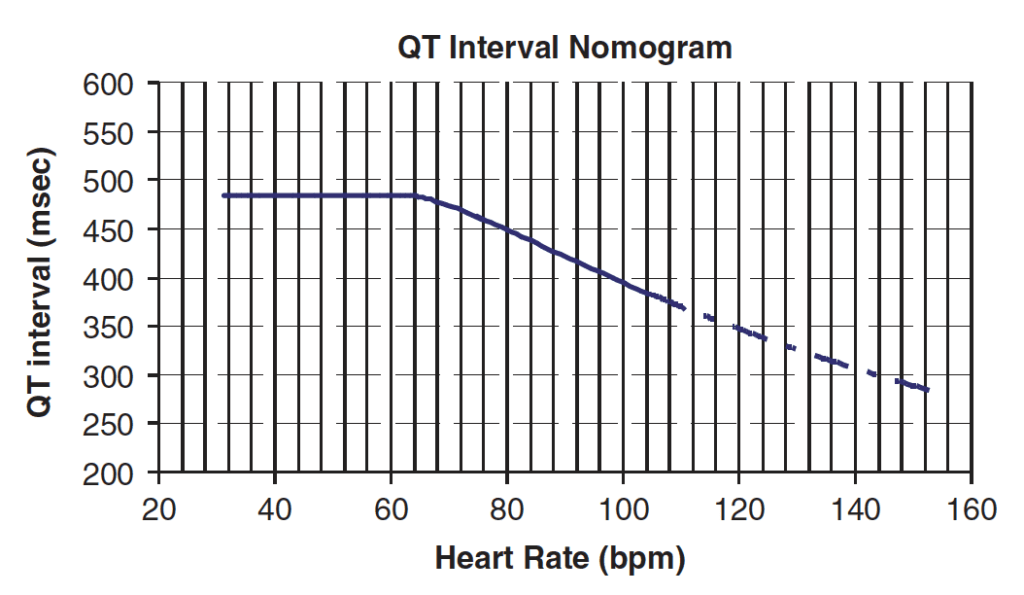Non-sedating Antihistamines
The non-sedating antihistamines include cetirizine, desloratadine, fexofenadine, levocetirizine and loratadine. In overdose they cause mild CNS depression, in therapeutic and supra therapeutic doses they have been associated with QT prolongation.
Toxic Mechanism:
They are less sedating due to the fact they are less lipophilic and do not cross the blood-brain-barrier as easily. They selectively inhibit the peripheral H1 receptors and therefore have a lower affinity for the central H1, muscarinic, alpha adrenergic and serotingeric (5-HT) receptors that the sedating anti-histamines do. That said, in overdose selectivity is lost and patients can develop increased sedation, anticholinergic effects and hypotension. QT prolongation occurs secondary to potassium channel blockade.
Toxicokinetics:
- Good oral absorption
- Peak effect 1 -3 hours
- Volume of distribution 1.5 L/kg
- Minor hepatic metabolism and half lives vary between 8 to 24 hours
Resuscitation:
- Rarely required
- Torsades de pointes: Is a theoretical risk. If it does occur:
- Correct hypoxia, hypokalaemia, hypomagnesaemia and hypocalcaemia
- If the heart rate is < 100 beats/minute consider isoprenaline infusion IV (1 – 10 microgram/minute or 0.05 – 2 microgram/minute in children) or override pacing to maintain a heart rate of 100 – 120 beats/minute
Risk Assessment
- Mild sedation, nausea, ataxia and anticholinergic effects in overdose
- Symptoms develop within 4 – 6 hours and resolve within 12 – 24 hours
- QT prolongation is rare but patients are more at risk with higher doses and co-ingestants with agents that prolong the QT interval.
- Children: Ingestion of 1 -2 tablets can be observed at home, they only need assessment if becoming drowsy or developing anticholinergic features.
Supportive Care
- Agitation: Titrated doses of benzodiazepines are effective e.g. diazepam 2.5 – 5 mg every 5 minutes IV until gentle sedation is achieved.
- Check for urinary retention – benzodiazepines will not fix this.
Investigations
- Screening: 12 lead ECG, BSL, Paracetamol level
- Specific: If symptomatic patients receive cardiac monitoring and a 12 lead ECG every 4 hours until clinical improvement.
- The QT should be measured on the QT nomogram (not Bazetts formula in toxicology). Technically the average QT of 6 leads should be plotted on the nomogram but recent evidence would indicate lead V2 is the most accurate if only one lead is to be used.
QT Nomogram
Decontamination:
- Not indicated
Enhanced Elimination
- Not clinically useful.
Antidote
- Physostigmine if anticholinergic delirium is severe.
Disposition
- If patients are asymptomatic at 6 hours post ingestion they are medically cleared.
- Patients who become symptomatic require observation until symptoms resolve and they can ambulate, pass urine and eat and drink.
- Patients with significant agitation or cardiac dysrhythmias require admission to HDU or ICU
Additional Resources and References
Additional Resources:
- ECG Library – Drugs causing QT prolongation
- Tox Flashcard – Anticholinergic Toxidrome
References:
- Hoffman RJ, de Souza I, Stetz JE. Prolonged QT segment and syncope with loratadine use (abstract). J Toxicology-Clinical Toxicology 2001; 39:505.
- Isbister GK. Risk assessment of drug-induced QT prolongation. Australian Prescriber 2015; 38(1):20-24
- Murray L et al. Toxicology Handbook 3rd Edition. Elsevier Australia 2015. ISBN 9780729542241
- Pinto YM, Van Gelder IC, Heeringa M et al. QT lengthening and life-threatening arrhythmias associated with fexofenadine. Lancet 1999; 353:980.
- Rotella JA, Taylor DM, Wong A, Greene SL. Accuracy of QT interval measurements on electrocardiographs displayed on electronic ‘smart’ devices. Emergency Medicine Australia 2016; 28:187-192

Toxicology Library
DRUGS and TOXICANTS
Dr Neil Long BMBS FACEM FRCEM FRCPC. Emergency Physician at Kelowna hospital, British Columbia. Loves the misery of alpine climbing and working in austere environments (namely tertiary trauma centres). Supporter of FOAMed, lifelong education and trying to find that elusive peak performance.

